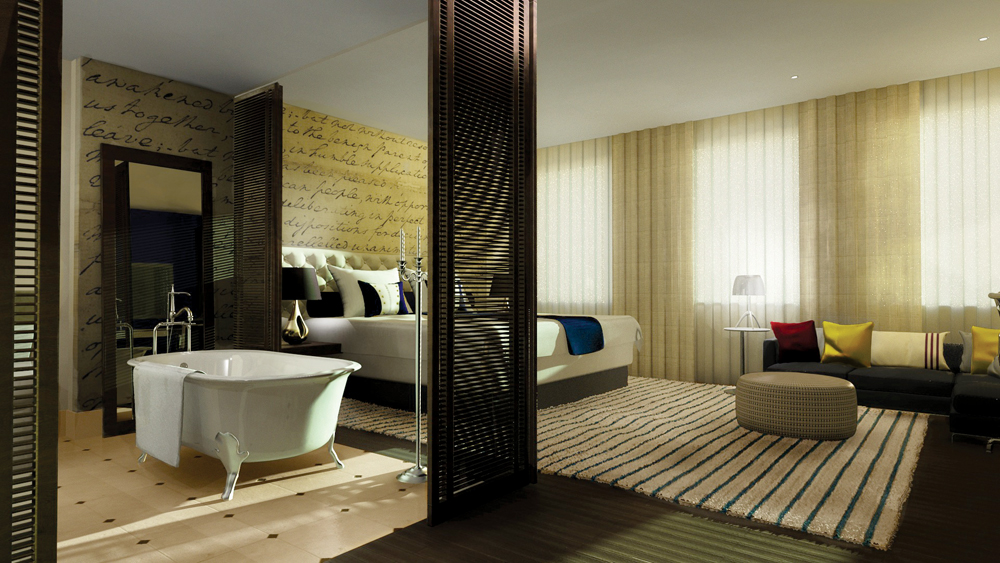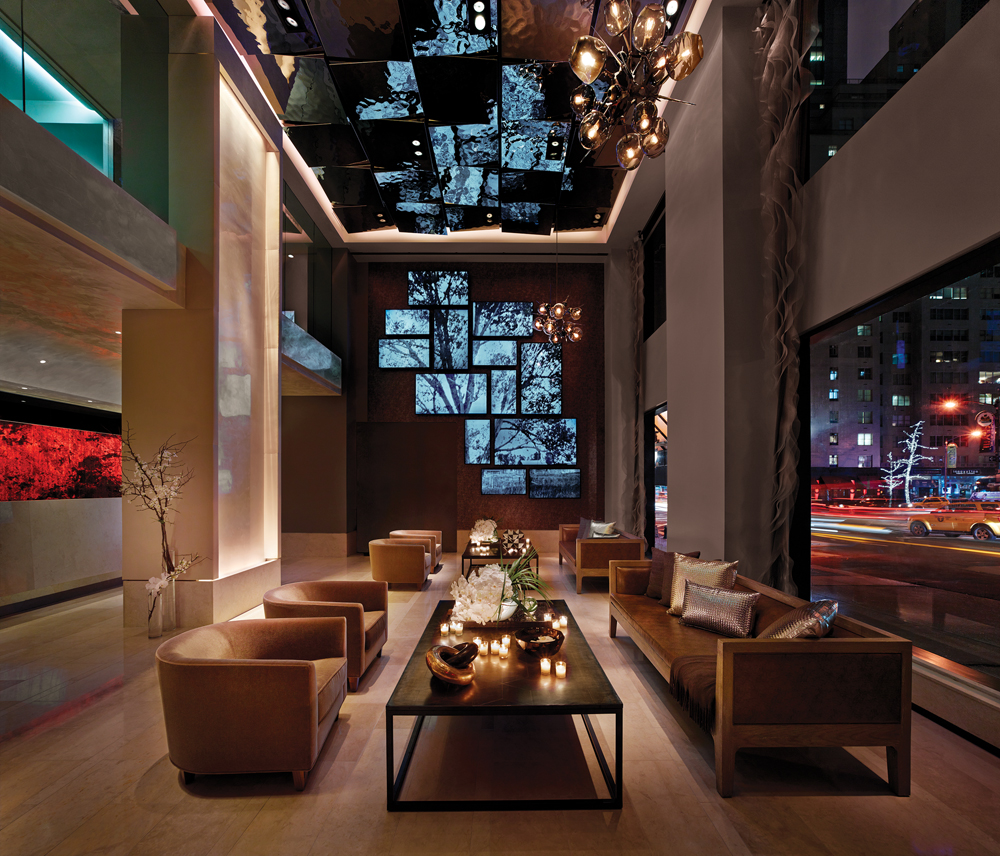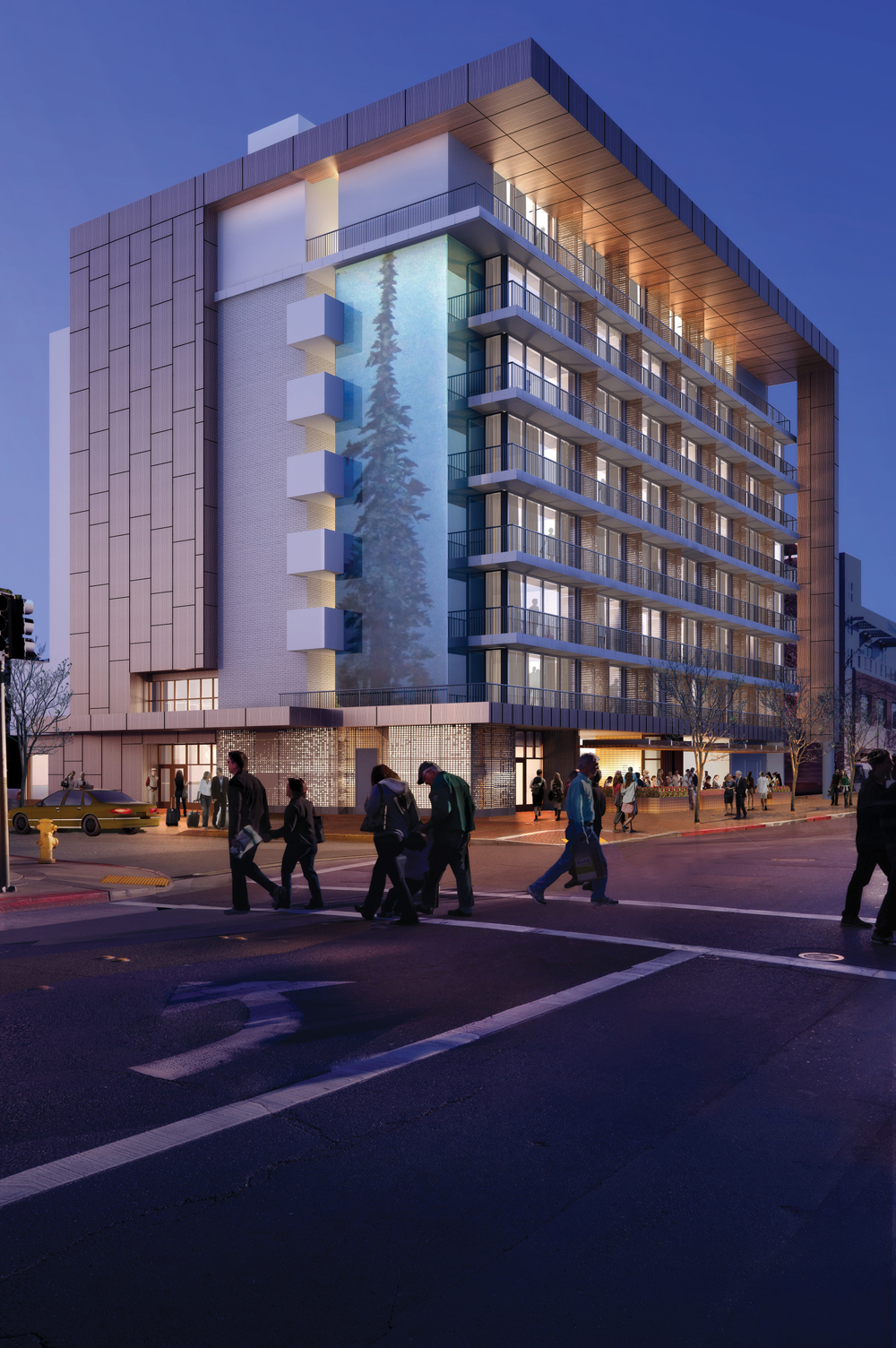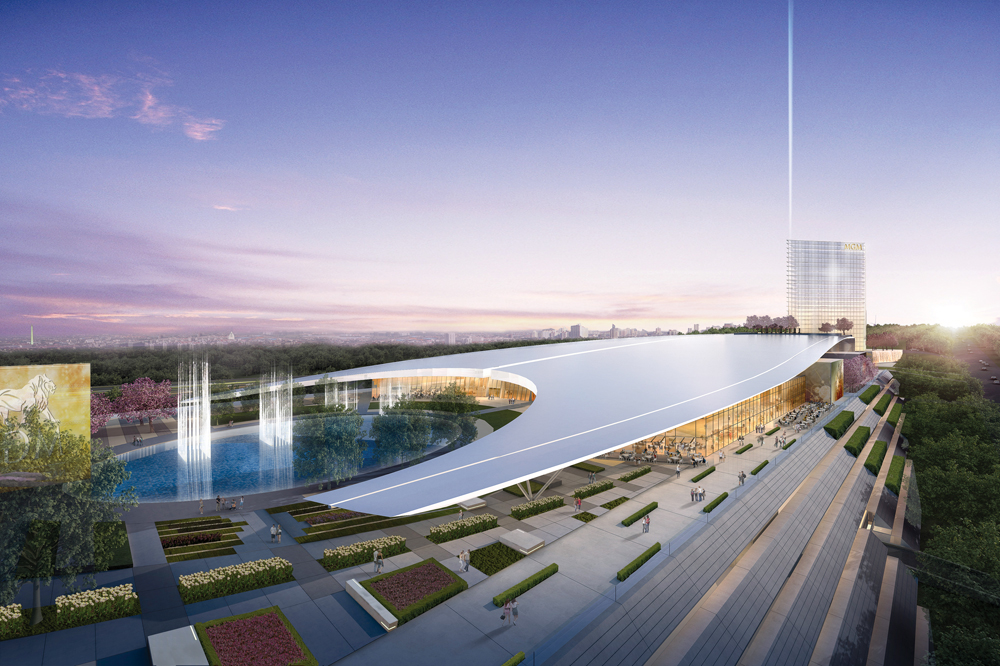‘Open throttle.’ That’s how real estate giant Jones Lang LaSalle characterizes the global market for hotel deals in 2014.
Transaction volume in the sector is predicted to reach nearly $50 billion this year—about 10% higher than last year, which was more than 30% higher than the year before. Travel research consulting firm STR says nearly 3,000 construction projects were active at the beginning of 2014 in the U.S. alone, up 16% compared with 2013. The previous year saw a 48% increase.
Funding for hotel investments is easier to secure than it has been since the 2008 crash. Half of lenders recently surveyed by STR, RobertDouglas, and Hotel News Now expect their overall hospitality volume to at least match 2013’s strong showing, and 35% say they will increase hotel lending significantly or moderately. “It feels good out there in the market,” says Robert Stiles, Principal and Managing Director at RobertDouglas.
Many major cities worldwide have seen strong economic recovery that justifies lodging investments, and growth is moving into secondary markets, especially in the Americas and Europe, according to JLL’s “Hotel Investment Outlook: Global 2014." However, conference and group business hasn’t reached pre-recession levels, and worries about the fairly soft world economy are making many players risk-averse. Cautious clients are asking their AEC partners for a high level of responsiveness.
“Costs continue to drive the market,” says Don Harrier, AIA, Principal and Senior VP, HKS Hill Glazier Studio. “How quickly and efficiently a hotel can open is what makes that project attractive to an equity partner. The luxury market generally remains slow, while small, efficient, yet chic hotels in select markets, as well as large convention hotels in urban areas, are what’s hot. REITs are looking for acquisitions in key gateway cities. The movement is centered around existing assets—renovation and repositioning work—and less ground-up.”
5 key hotel trends
1. Demand for sustainable, healthy, locally authentic properties, with an eye toward attracting Millennials.
2. Adaptive reuse of interesting non-hotel buildings that provide a strong sense of place and, often, tax advantages.
3. Renovation of existing hotel properties to meet pent-up demand and rising consumer expectations.
4. Renewed popularity of large projects mixing hospitality, residential, workplace, entertainment, sports, and other functions.
5. Rise of the value-oriented “select-service” category, bridging the gap between luxury and economy.
In many cases, projects are being shaped not only by economic trends but also by owners’ need to attract Millennials, whose tastes tend to differ from those of their Boomer parents. Greenness, wellness, and distinctiveness are important themes, according to firms active in the hospitality sector.
“There has been a definite demographic shift toward strong sustainable practices, enthusiasm for an increased amount of shared community space, and an eclectic design product approach,” says Manuel Cadrecha, AIA, LEED AP, Principal and Corporate+Commercial+Civic Global Market Leader for Perkins+Will.
Here’s what readers are telling BD+C about major trends in hotel design and construction.
1. Millennials’ checklist: green, healthy, local
As discussed in BD+C’s Greenbuild issue, owners of hotels are increasingly concerned about expanding sustainability efforts beyond O+M procedures such as laundry. Energy- and water-conserving facilities not only save money but also dovetail with owners’ desire to market comfort, wellness, and environmental responsibility.
“Clients are expecting top-of-the-line room control systems to be installed for a better guest experience,” says Paul Finamore, Senior VP and Director of Operations in the New York City office of Lend Lease. “Features typically include heating, ventilation, and air conditioning control, in-room lighting, and occupancy sensors designed to set back thermostats when the room is unoccupied, reducing energy consumption.”
The MGM Grand Hotel in Las Vegas has taken the concept to extremes with its Stay Well rooms, created in collaboration with the Cleveland Clinic and New York design firm Delos LLC. Features include dawn-simulating alarm clocks, HEPA-filtered air purifiers, light machines that complement clients’ circadian rhythms, vitamin C-enriched shower water, and aromatherapy diffusers. The MGM Grand started with 42 Stay Well rooms in 2012 but has since expanded to more than 170.

Hotel George, a Kimpton property in Washington, D.C., is undergoing a redesign of 136 guest rooms, plus several suites, corridors, and elevator banks. The design combines traditional styles with whimsical touches. Parchment-and-ink-themed wallpaper evokes the city’s history; accent pillows are based on Revolutionary War uniforms. CBT is the architect. PHOTO: RON BLUNT
John Gerondelis, AIA, LEED AP BD+C, a Principal at Smallwood, Reynolds, Stewart, Stewart & Associates, says the “green” push and the “healthy and authentic” drumbeat are complementary. He calls this convergence “ecological aesthetics”: the mandate to create properties that reflect their locations, instead of cookie-cutter designs. The holistic approach goes deeper than systems engineering and interior design, according to Gerondelis.
“The focus for a while has been on improving materials and machines, such as high-performance glazing and more efficient mechanical systems,” he says. But now, clients believe “the development should also look green, or at least more contextual—more like the place in which it’s located.”
Some major chains are responding with “lifestyle hotels”: boutique-ish brands that benefit from parent companies’ economies of scale and infrastructure. Brands that are actively building include Element and Aloft (Starwood); Edition (Marriott); Andaz (Hyatt); and Hotel Indigo (InterContinental Hotels Group). Rooms are well-detailed but tend to be fairly small, to nudge customers into the properties’ restaurants and bars.
Whatever the solution, owners are demanding that properties be more carefully tailored to their settings, says Shawn Basler, a Principal who leads Perkins Eastman’s hospitality practice. “The beachfront resort must interpret its context with a modern hand that recognizes increasingly sophisticated expectations. The reimagined boutique hotel must project a unique design vision.”
2. For a one-of-a-kind vibe, repurpose history
Adaptive reuse of existing facilities—from factories to office buildings—is one strategy for affirming the local context. Kimpton Hotels has built a business from this model, but other hoteliers are jumping on board, according to Janet Smith Haltom, AIA, Principal at Hnedak Bobo Group.
“Many of the projects we’re involved with are not necessarily conversions of historic properties into grand, five-star landmark hotels, but rather a complete transformation of historic structures into mixed-use, residential, and hospitality projects that take full advantage of their location in the urban core,” she says. “With historic tax credits available, and most cities offering additional incentives for redevelopment, it represents smart investment.”
Haltom says the typical program includes restoration of lobbies and other public spaces, with preservation of decorative features when possible, plus spacious guestrooms and upgraded MEP and HVAC systems. Tweaks of historic color palettes may be necessary to meet modern tastes, she advises. Building Teams can benefit from liaisons with state historic preservation offices, local city governments, and even the National Park Service, helping to ensure compliance with federal rehab standards and full benefits from historic preservation tax credits.

The Quin Hotel, which recently opened near New York City’s Carnegie Hall, started life in 1929 as the Buckingham Hotel. Once popular with opera singers and musicians, the property now has 208 guest rooms and bills itself as a “luxury lifestyle hotel.” An affiliated arts program will offer exhibits, lectures, film premieres, and performances. Perkins Eastman designed the project. PHOTO: NICHOLAS KOENIG
Structures dating from the late 1800s and the first few decades of the 20th century are favored, particularly when they offer high floor-to-floor heights and adaptability to natural ventilation. However, Modernist structures are also being reborn.
For instance, Joie de Vivre just opened The Epiphany Hotel in Palo Alto, Calif., near Stanford University, repurposing an eight-story senior living center built in the 1970s. Steinberg Architects, McCartan Interior Design, and think tank IDEO collaborated on the boutique project with Commune Hotels & Resorts, Joie de Vivre’s parent company. “This is intended to be a playful, authentic property full of imagination and aligned with the local lifestyle,” says Commune’s CEO Niki Leondakis. The “California cool” aesthetic in this once-pedestrian building includes tech-heavy guest rooms, work “lounges,” fancy linens and amenities, and Fred water, a Sausalito product supplied in refillable flask-shaped bottles.
3. Renovate, or risk irrelevance
The need to stay competitive is also driving hotel-to-hotel renovations, including same-brand upgrades as well as transformations to entirely different brand flags. Last year was a record-breaker for hotel renovations in the U.S., with one out of five existing properties getting an upgrade, according to the Preston Robert Tisch Center for Hospitality, Tourism and Sports Management at New York University. (A more typical annual average is 15%.)
“The major brands are actively changing their standards based on what guests want today and in the future,” says Patricia Miller, VP and Managing Principal, LEO A DALY. “Room layouts, guest bathrooms, and design styles are being developed in response to each brand’s target customer base and changes in technology.”
Jacqueline McGee, Principal and leader of hospitality and high-end residential design for CBT Architects, agrees. “Because the hotel renovation cycle was disrupted by the 2008 market crash, many are now catching up. So there is a crush of renovations happening right now. Many properties are competing for resources from firms that downsized after the crash, including contractors and suppliers.”
Loews Hotels & Resorts is a prominent example of big bucks being spent on renovation. An upgrade initiative will eventually impact 15 of its 19 properties, including a $70 million makeover of the flagship Loews Regency in New York City. Accor, whose Pullman brand is an important lifestyle label in Europe and Asia, is also busily renovating, including five sites in Paris alone. Accor is upgrading within other brands—notably, an $85 million revamp of the Novotel Times Square. Originally targeted toward budget-conscious European tourists, the Novotel has been redesigned by Stonehill & Taylor as an edgy, youth-minded property reflective of the New York buzz.

Joie de Vivre just opened The Epiphany Hotel—born through adaptive reuse of a Modernist senior-living facility in Palo Alto, Calif. The hip interiors are intended to reflect the tech-based culture of Stanford University and Silicon Valley. On the Building Team: Commune Hotels & Resorts (developer), Steinberg Architects, McCartan Interior Design, BuildGroup (CM, MEP), and design think tank IDEO. PHOTO: COURTESY JOY DE VIVRE HOTELS
Also on the repositioning bandwagon is Caesars Entertainment, which has spent $185 million converting the traditional Bill’s Gamblin’ Hall & Saloon, on the Las Vegas strip, into the Cromwell Hotel. The property received a new façade, 188 renovated hotel rooms, redecorated public spaces, a remodeled casino, new retail outlets, a restaurant helmed by celebrity chef Giada de Laurentiis, and a “day/night club,” incorporating a pool and spa with a bar and live music venue. These changes are the price of staying competitve, says Frank Dumont, VP and Director of Design for LEO A DALY, which designed the project.
“Our clients are all looking for new types of venues to entice visitors from competing facilities,” says Dumont. “They’re trying to take advantage of the views for a more resort-like experience. Additions of day/night clubs are also a large growth area. People spend large sums at these clubs, and it’s an attraction for locals and tourists alike.”
4. Hotels meet housing in mixed-use plans
Before the economic crash, large mixed-use projects that included hotels were a popular development model. This scenario is regaining momentum in thriving urban cores, integrating hospitality with retail and entertainment venues, rental and sale housing, and offices. “Residential components that are for sale, in the appropriate market, can help finance the overall development, providing lower up-front financial risk,” says SRSSA’s Gerondelis. “Sometimes residences are branded with the hotels.”
High-density, small-footprint projects are favored in the Middle East and Asia, such as the upcoming 67-story Kempinski Hotel and Residences in Jeddah, Saudi Arabia. The Perkins+Will project will include a luxury hotel, serviced apartments, and condominiums, all positioned to provide spectacular views of the Red Sea.
Where there’s room, multi-building low-rise schemes are more common. For instance, developer The Athens Group is guiding a $100 million expansion of the Inn at Palmetto Bluff, part of the existing 20,000-acre Palmetto Bluff residential development created by Crescent Communities in Bluffton, S.C. The project includes 150 hotel rooms, a spa and fitness center, meeting facilities, and restaurants. Buildings are modestly sized with traditional Low Country architecture, complementing 50 existing guest cottages. Montage Hotels & Resorts will also be offering branded residences as part of the initiative. The Building Team includes design firms HKS Hill Glazier Studio, Hart Howerton, and Wilson Associates.

Hotel rooms in the U.S. as of January 2014, including existing supply and properties in construction, plus a percentage change comparison with January 2013. “In construction” data includes projects where building has commenced; “active pipeline” data includes projects in the construction, final planning, and planning stages but not projects in the pre-planning stage. The “unaffiliated” category represents properties that are not part of a chain, with a high number of rooms in the pipeline for these independents.
Some transit-oriented versions of mixed-use include hotels plus condos without a retail/entertainment component; a different take consists of hotels and conference facilities linked to major sports venues. “The hotel and meeting space keeps the real estate generating income for the 250 days of the year when the sports venue is not being used,” says Gerondelis.
Rob Blalock, Division Manager for contractor Brasfield & Gorrie (and a member of BD+C’s “40 Under 40” Class of 2013), concludes: “We’re seeing a trend in hotel projects connected to larger developments, as these seem to make more sense from a financing standpoint. Hotels are coming back, but they need to be part of a larger story to get off the ground, whether that’s a convention center, a theme park, or some other attraction.”
5. Select-service bridges the value gap
Grand isn’t the only viable game, however. Select-service hotels—traditionally defined as properties without restaurants or banquet facilities—are also hot. In fact, this sector currently represents the leading format among new-construction projects for U.S. chains. Representative brands include Courtyard by Marriott, Hyatt Place, and Hilton Garden Inn.
Today’s version of select-service straddles a full-scale convention hotel and a bare-bones property. Sites may include fitness rooms, business centers, guest laundry machines, mini convenience stores, indoor or outdoor pools, small meeting rooms, and modest restaurants. Whatever the mix, the building type exudes an image of value.
Business and leisure travelers appreciate the thrifty pricing, according to Charles Pinkham, VP, Development, with real estate investment firm Portman Holdings. “Select-service appeals because it offers travelers everything they need and nothing they don’t need,” he says. “Large ballrooms, large restaurant menus, spa services, and other options that come with a full-service hotel are eliminated, allowing the traveler to pay a good price for a nice room.”
Many of today’s lenders see select-service as a particularly low-risk proposition. “These properties are the easiest to finance,” says LEO A DALY’s Miller.
Portman Holdings is currently focusing on premium urban locations in Tier 2 cities. “We feel there’s a decent pipeline for these projects there,” says Pinkham.
Whatever the scope, uniformity no longer sells. Economies of scale are always appealing, and no one wants to reinvent the wheel. But, increasingly, the traveling public will pay for experiences that are more special than another night in a generic property. Individualized designs represent greater potential revenue for Building Teams than merely replicating prototypes. Nimble firms will have an advantage in a scenario where each project is viewed as a one-off.
“Owners are asking us to customize design to create an identity unique to a specific property,” says Miller. “Designers have to speed up the schedule to meet the need. We need to be careful to schedule enough design time to properly coordinate and address potential issues early.”
Building Teams that know how to squeeze a buck will also be prized, says Brasfield & Gorrie’s Blalock. “Increased activity has spurred price increases by suppliers and subcontractors who are anxious to boost performance after several years of lean margins. Rising costs are passed along to projects, posing a challenge to tight budgets. Developers are racing to beat competition to the market while trying to leverage buying power.”
Related Stories
MFPRO+ New Projects | Oct 30, 2024
BIG’s One High Line finally reaches completion in New York City’s West Chelsea neighborhood
One High Line, a luxury residential project spanning a full city block in New York’s West Chelsea neighborhood, reached completion this summer following years of delays related to investor lawsuits.
Urban Planning | Oct 30, 2024
Bridging the gap: How early architect involvement can revolutionize a city’s capital improvement plans
Capital Improvement Plans (CIPs) typically span three to five years and outline future city projects and their costs. While they set the stage, the design and construction of these projects often extend beyond the CIP window, leading to a disconnect between the initial budget and evolving project scope. This can result in financial shortfalls, forcing cities to cut back on critical project features.
MFPRO+ New Projects | Oct 30, 2024
Luxury waterfront tower in Brooklyn features East River and Manhattan skyline views
Leasing recently began for The Dupont, a 41-story luxury rental property along the Brooklyn, N.Y., waterfront. Located within the 22-acre Greenpoint Landing, where it overlooks the newly constructed Newtown Barge Park, the high-rise features East River and Manhattan skyline views along with 20,000 sf of indoor and outdoor communal space.
Libraries | Oct 30, 2024
Reasons to reinvent the Midcentury academic library
DLR Group's Interior Design Leader Gretchen Holy, Assoc. IIDA, shares the idea that a designer's responsibility to embrace a library’s history, respect its past, and create an environment that will serve student populations for the next 100 years.
Resiliency | Oct 29, 2024
Climate change degrades buildings slowly but steadily
While natural disasters such as hurricanes and wildfires can destroy buildings in minutes, other factors exacerbated by climate change degrade buildings more slowly but still cause costly damage.
Office Buildings | Oct 29, 2024
Editorial call for Office Building project case studies
BD+C editors are looking to feature a roundup of office building projects for 2024, including office-to-residential conversions. Deadline for submission: December 6, 2024.
Healthcare Facilities | Oct 28, 2024
New surgical tower is largest addition to UNC Health campus in Chapel Hill
Construction on UNC Health’s North Carolina Surgical Hospital, the largest addition to the Chapel Hill campus since it was built in 1952, was recently completed. The seven-story, 375,000-sf structure houses 26 operating rooms, four of which are hybrid size to accommodate additional equipment and technology for newly developed procedures.
Multifamily Housing | Oct 28, 2024
A case for mid-rise: How multifamily housing can reshape our cities
Often referred to as “five-over-ones,” the mid-rise apartment type is typically comprised of five stories of apartments on top of a concrete “podium” of ground-floor retail. The main criticism of the “five-over-one” is that they are often too predictable.
Sports and Recreational Facilities | Oct 24, 2024
Stadium renovation plans unveiled for Boston’s National Women’s Soccer League
A city-owned 75-year-old stadium in Boston’s historic Franklin Park will be renovated for a new National Women’s Soccer League team. The park, designed by Fredrick Law Olmsted in the 1880s, is the home of White Stadium, which was built in 1949 and has since fallen into disrepair.
Laboratories | Oct 23, 2024
From sterile to stimulating: The rise of community-centric life sciences campuses
To distinguish their life sciences campuses, developers are partnering with architectural and design firms to reimagine life sciences facilities as vibrant, welcoming destinations. By emphasizing four key elements—wellness, collaboration, biophilic design, and community integration—they are setting their properties apart.

















